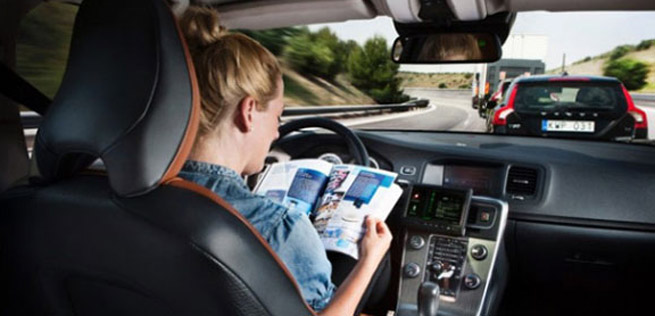
The recent developments around driverless cars confirmed my worst suspicions: I was born too early. Just imagine. Several decades later (let’s not be too specific here), and I would not have had to endure the trauma of taking the driver’s licence test.
The world of today is abuzz with driverless (also called autonomous, self-driving, driver-free and robotic) cars. Basically, the idea is to install some equipment, ranging from radar, lidar (light radar), GPS, to computer vision, plus lots of software into “regular” cars, allowing them to sense their surroundings and find their way in it, better than human drivers do.
The newest on the driverless car front comes from Britain. Starting 2015, self-driving cars will be tested on public roads in three (yet to be named) cities. British government has earmarked 10 million pounds for research and testing and is getting ready to review traffic rules (presumably, especially the one that stipulates that there has to be a driver in the car), all with the ambition to make Britain the world’s capital of cars without drivers.
However, the honour of the world’s first driverless zone goes to the U.S. state of Nevada, which allowed driverless cars from 1 March 2012. The Nevada Department of Motor Vehicles issued the first “look, there’s no driver” license in May 2012 to a Toyota Prius modified with Google’s experimental driverless technology. Two other U. S. states, Florida and California, followed suit and allowed the testing of autonomous cars on public roads.
Although it is not the only one involved in this field of research, Google is closely associated with the current advent of cars without drivers. The word is that the internet search engine giant has already amassed a respectably-sized mountain of intellectual property rights in this area. Unlike Google, which is going for all-out self-driving cars, most car manufacturers are sticking to the incremental approach, automating this or that feature. Even so, some analysts dare to predict that the majority of new cars will be driverless by the early 2030s.
 If this prediction comes true, we are on the brink of the biggest revolution in auto industry since horse drawn carts, the revolution that has the potential to change not only how we get from point A to point B, but also the way we built our cities and the very fabric of our lives. For example: car share, which is already gaining ground in the U. S. and Europe, would blossom, drastically reducing the overall number of cars; there will be no more need for vast parking spaces, because we’d send the car back home after it delivers us to work; the very young, the very old and the handicapped will be able to drive around on their own; and so on.
If this prediction comes true, we are on the brink of the biggest revolution in auto industry since horse drawn carts, the revolution that has the potential to change not only how we get from point A to point B, but also the way we built our cities and the very fabric of our lives. For example: car share, which is already gaining ground in the U. S. and Europe, would blossom, drastically reducing the overall number of cars; there will be no more need for vast parking spaces, because we’d send the car back home after it delivers us to work; the very young, the very old and the handicapped will be able to drive around on their own; and so on.
Oh yes, we’d also be able to consign driver’s licence testing to the rubbish dump of history!









